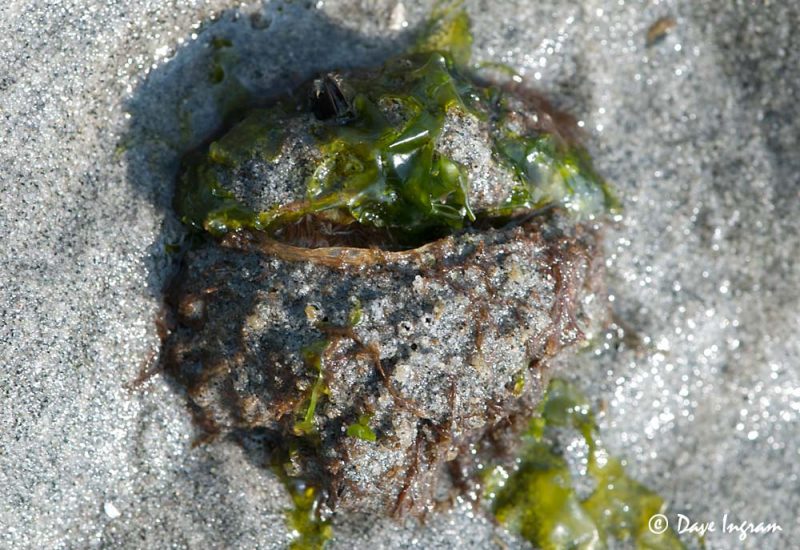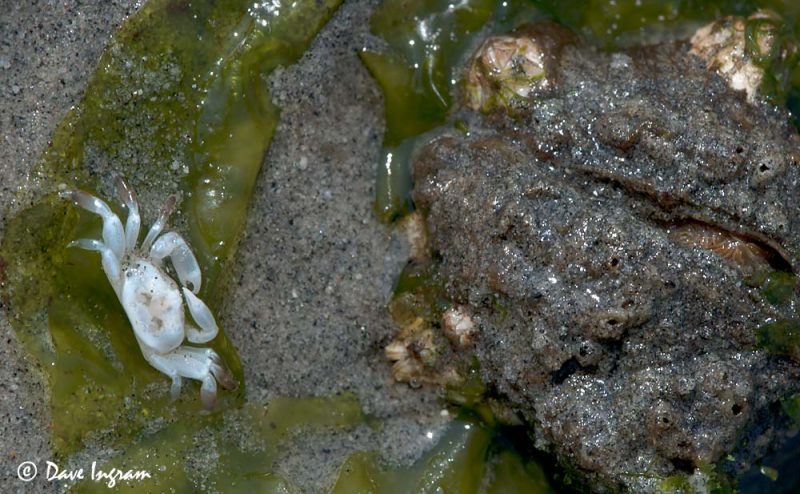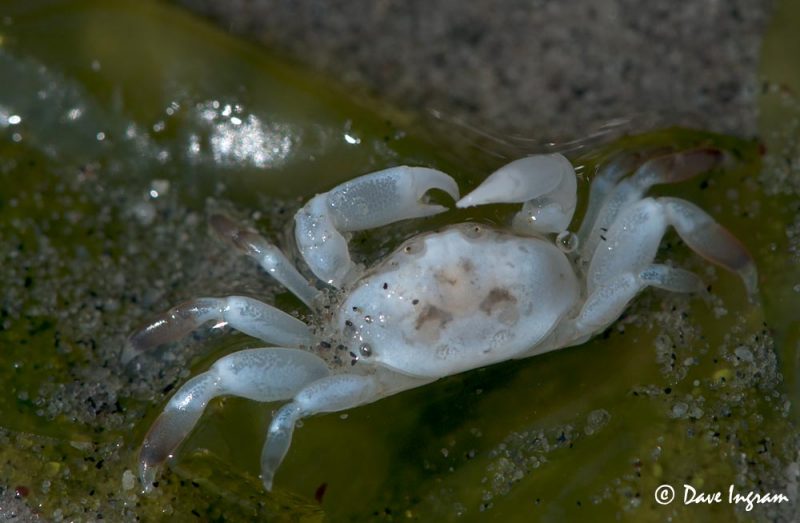One of the fun things that you can do with your kids at the beach is look for the dramatic siphons of the Horse Clam (Tresus sp.) at low tide. Most people don’t connect the somewhat grotesque looking tube sticking out of the sand with the feeding apparatus of a clam but that is indeed what they are.
Below the surface of the sand, and in the case of Horse Clams up to 50 cm deep, lies a large clam. Rather than trying to dig one of these beasts out, content yourself with studying what you can see – the tip of the siphon or the empty shells of clams on the surface of the sand. It’s just too hard to get the clam back to its original depth once you’ve dug it up.

This weekend we discovered a field of siphons and I encouraged the kids to step close to (but not on!) the siphons. The disturbance of the sand causes the clam to retract its siphon, squirting out a jet of water as it does so. Great fun if someone happens to be taking a close look at the clam’s siphon!
There are two different species of Horse Clams living under the sand at Miracle Beach Provincial Park on Vancouver Island but with some careful observation you can determine which one you’re dealing with. The siphon that I photographed likely belongs to the Fat Gaper (Tresus capax). It differs from the other species, the Pacific Gaper (Tresus nuttallii) in a number of subtle ways.

According to Andy Lamb’s excellent book Marine Life of the Pacific Northwest, Fat Gapers have finger-like projections on the incurrent opening of the siphon that are gold/tan in colour rather than the dark green that is characteristic of the Pacific Gaper. Note however, that Rick Harbo’s Shells and Shellfish of the Pacific Northwest
states the reverse, describing the rim of the siphon of the Pacific Gaper as tan to pale orange. Kosloff in Seashore Life of The North Pacific, describes the leathery plates as being more prominent on the Pacific Gaper but without having both side by side it is difficult to compare them. Both can have a number of organisms growing on these plates including barnacles, hydroids and red algae.

Once you’ve found some siphons check them closely for small pea crabs (Pinnixa sp.). These crabs typically live inside the mantle cavity of the clam but can sometimes be found on the surface near the siphon. I discovered a single white crab about the size of my little fingernail near one of the siphons. I’m reasonably sure that this is the Gaper Pea Crab (Pinnixa littoralis) but without a good crab identification book I can’t be 100% certain. The distinguishing feature of this species is the presence of a space between the pincer tips of the claws when they are closed.

This was the first time I’ve found a pea crab which reinforces my belief that it’s always important to look closely at the smaller details of things – you’re bound to discover something interesting and wonderful!
Further Reading:
- Read more about the Fat Gaper and pea crabs over at Wanderin’ Weeta – Doing My Homework.
- Intertidal Marine Invertebrates of the South Puget Sound has a good profile of the Fat Gaper.
- More pictures of horse clam siphons can be found in my blog post Flacid.
If anyone can provide clarification on the colour of the projections on the siphon I’d appreciate it. I’ll provide a comparison of the two shells of both of these species of horse clams in a future post!